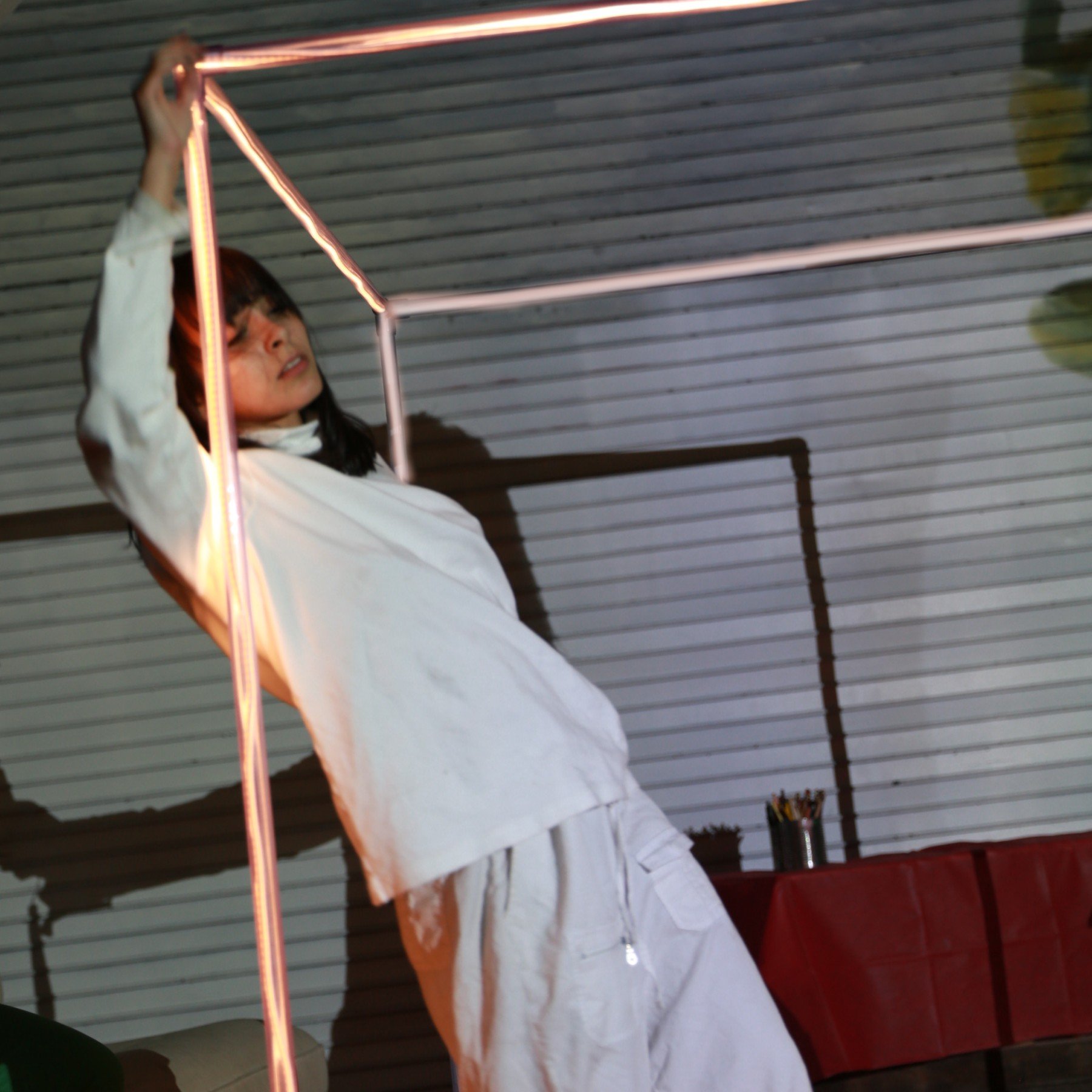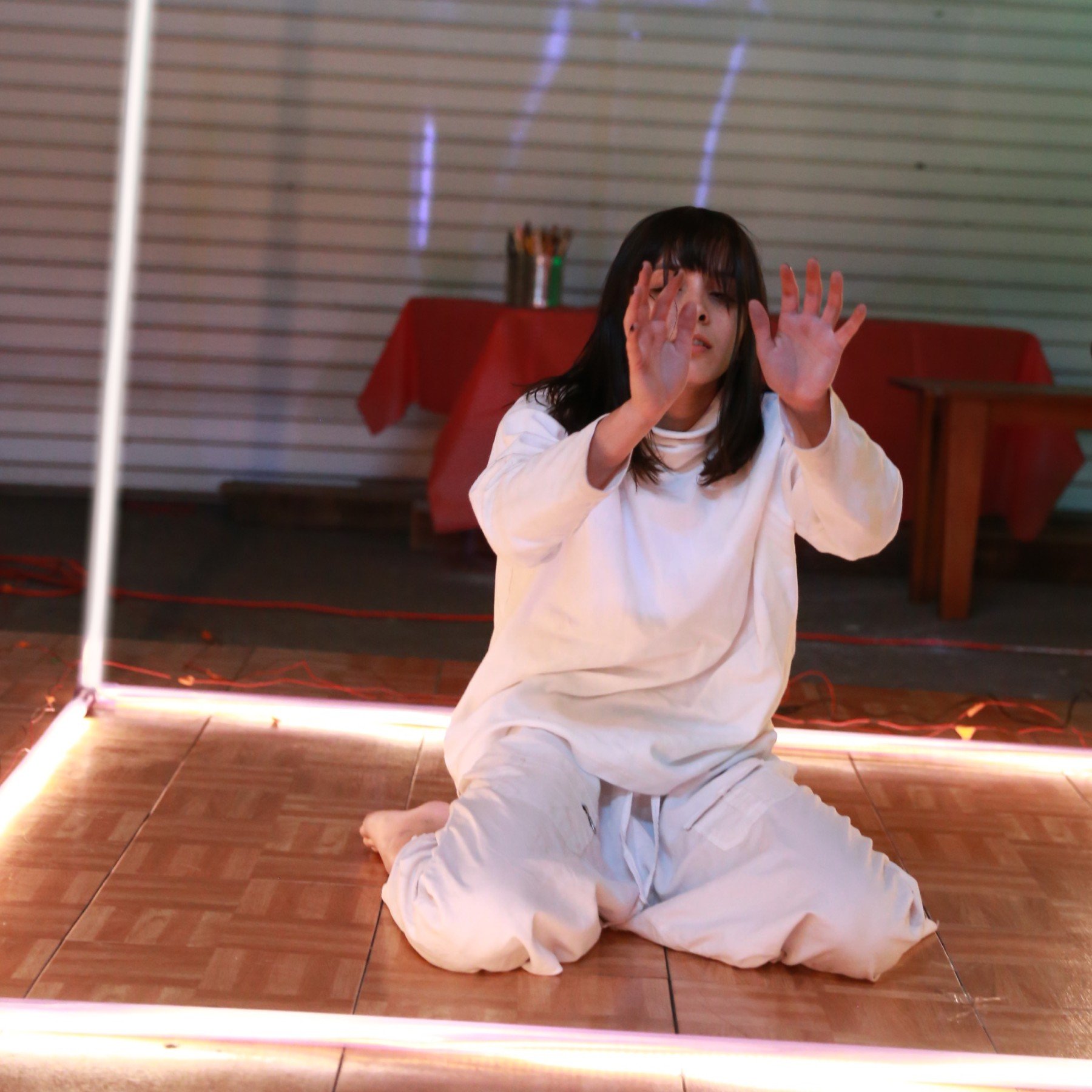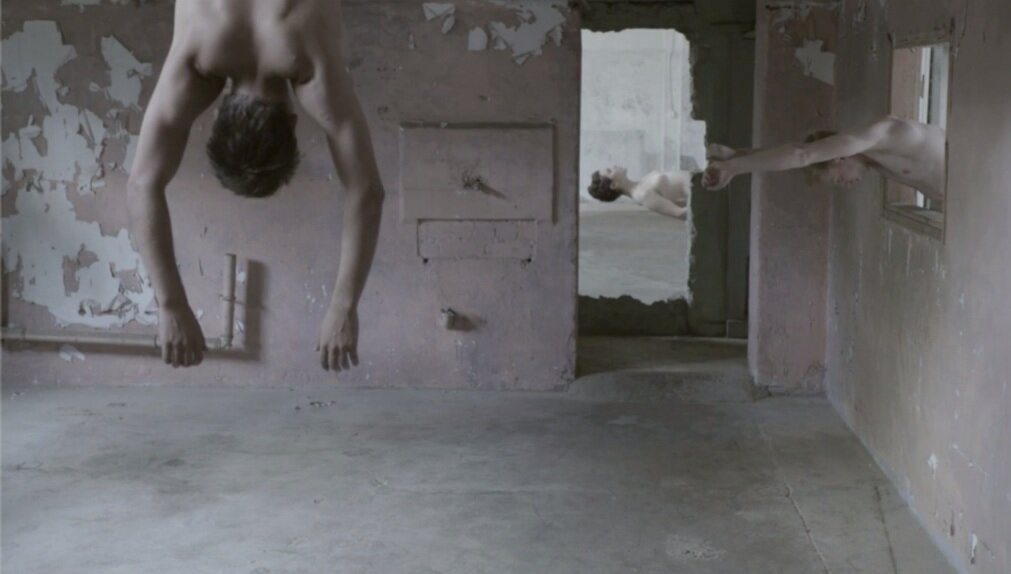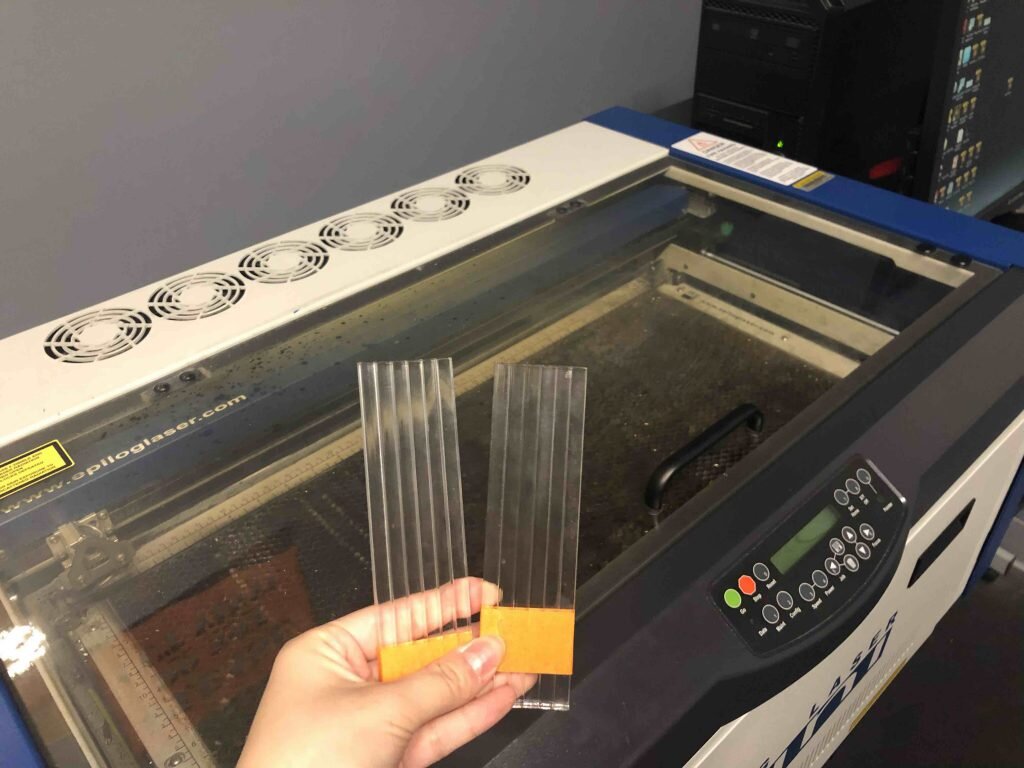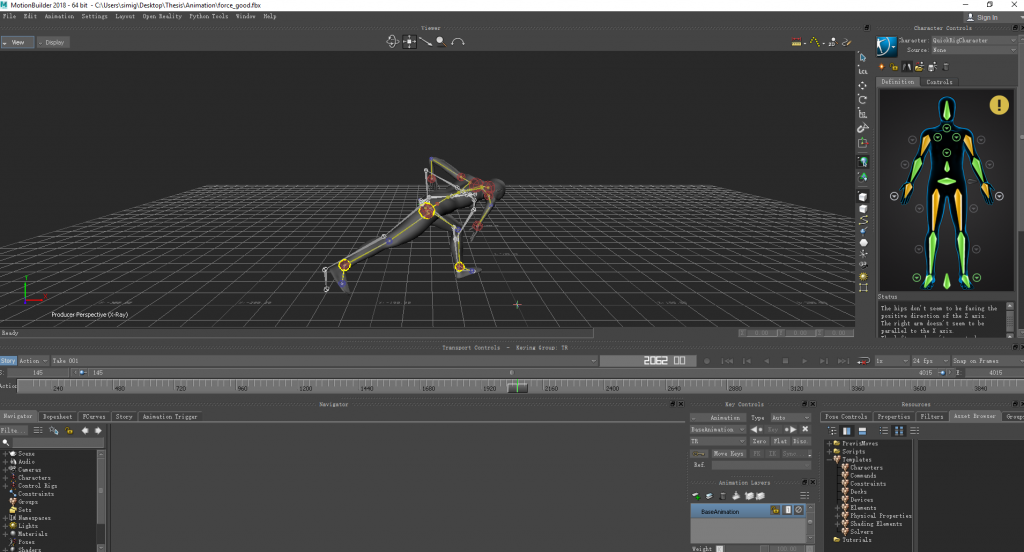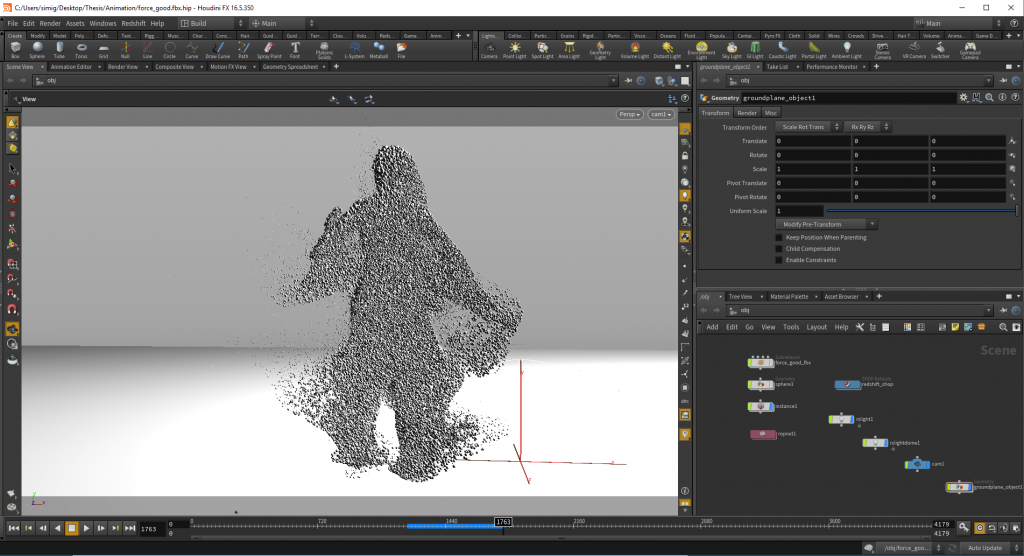Quiet Pulse: The Dance of Solitude
3D ANIMATION | MOTION CAPTURE | LIVE DANCE PERFORMANCE
TECHNOLOGY: Motion Capture / Motion Builder / Maya / Houdini / Premiere
PERFORMER: Sarah Amores
Quiet Pulse is a live interdisciplinary dance performance that explores the layered, often overlooked experience of solitude in the modern, hyperconnected city. In an era where digital connectivity is constant and private space is scarce, solitude has become a fleeting, and sometimes radical, form of self-care.
Rooted in personal observation and psychological research, this project seeks to examine how solitude is experienced not just as a lifestyle choice but often as a necessity born from stress, emotional exhaustion, or social overwhelm. Through interviews, surveys, and movement experiments, I found that solitude, whether chosen or imposed, can hold profound, transformative value when we learn to sit with it rather than escape from it.
The performance unfolds in four chapters: Escape, Dissociation, Choice, and Solitude, each representing a psychological stage in the solitary experience. Using live motion capture, projection, and dance, the piece fuses digital and physical elements to construct an abstract, wordless narrative that is not about one person, but a collective emotional state. At the core of Quiet Pulse is a simple metaphor: the “quiet pulse” that emerges when the noise fades, a heartbeat of thought, a breath of stillness, a space to begin again.
AWARDS
Showcase
Ideation
The concept for this piece began with two small but telling rituals: the moments of peace my mother and my roommate find in the bathroom, perhaps the only space in their lives where they feel truly alone. These intimate observations reframed urban solitude for me as something not romantic or remote, but constrained, creative, and deeply personal.
The motion of human bodies can express a lot of inner feelings, and how the performers interact with their surroundings(which can be a virtual world or physical space) can reflect inter-human or human-society relationships, which might be a good way to express my idea.
Research and Methodology
Surveys
An online survey was conducted with 110 participants to better understand public perceptions of solitude. Respondents rated their attitudes using a 0–5 scale, allowing for nuance beyond binary answers. The findings revealed that while 58.2% found solitude helpful, 36.4% remained neutral, and 20% viewed it negatively.
Of the respondents, 81 had experienced solitude, forming the focus group for the following questions. Most described their solitude experiences as neutral to mildly pleasant, neither extreme nor traumatic. Their motivations fall into three categories:
Those who seek solitude as part of their personality
Those who use solitude to cope with stress or emotional overload
Those who feel forced into solitude by circumstance
Locations for solitude ranged from private homes to semi-public spaces like cafés or libraries, with few citing nature due to accessibility. Notably, some found solitude even in crowded settings, suggesting that solitude is as much a mental state as a physical one.
Interviews
In-depth interviews with eight urban residents supported these findings. To summarize the key insights:
Motivations
Responses fell into two categories: solitude as a form of escape from pressure or social fatigue, and solitude as a comfortable lifestyle choice. Some participants sought quiet to recover; others thrived in it for focus and creativity.Activities
Common solitary activities included sleeping, meditating, reading, watching media, gaming, walking, shopping, or working. Everyone emphasized doing what felt most comfortable or natural at the time.Spaces
Most preferred familiar, quiet places like home, libraries, or classrooms. Nature was mentioned, but less accessible. Interestingly, some found solitude even in crowded spaces, highlighting that solitude is more about mindset than setting.Impact
Those using solitude to escape tended to view it as temporary relief. Others described it as a positive, even empowering, part of their routine, helping them recharge, work better, or think more clearly.
The results reveal two primary solitude types: emotional withdrawal and intentional retreat. Regardless of intent, solitude was frequently described as restorative, offering space to reflect, reset, and momentarily escape external pressures.
Drawing Experiments
To explore nonverbal emotional expression, I asked participants to depict their experience of solitude through abstract crayon drawings. Common themes emerged: both chaos and peace. And participants gravitated toward cool tones (e.g., green, blue, purple). These aesthetic responses directly informed the performance’s visual and choreographic design.
Artistic Design and Structure
Conceptual Structure
The performance is divided into four chapters:
Escape: The initial, often reactive desire to withdraw from overwhelming environments.
Dissociation: The difficulty of staying present in solitude amid persistent digital and social pressures.
Choice: The turning point where solitude becomes a conscious, empowering decision.
Solitude: A place of self-connection and quiet resilience.
Each chapter is expressed through a distinct palette of movement, music, and digital effects, representing a journey from chaos to clarity.
Staging
The physical staging centers around a minimalist, transparent cube outlined with white neon lights. This structure represents the emotional and spatial constraints of urban solitude: small, defined, yet permeable. The design enabled dynamic performer interaction, reinforcing the idea that solitude is not isolation but a flexible state within a larger, connected world.
I decided to set an LED cube on the stage as the enclosed space for my dancer to perform. I was also thinking of building an audio-reactive LED system to add more interactions, but I’m not too sure about the final effect on the stage, so I began with building a small prototype first.
Choreographic Process
Three rounds of motion capture were conducted to develop an expressive, layered movement vocabulary:
Round 1: A non-dancer was guided through emotional prompts (e.g., anxiety, escape, calm) to capture instinctive reactions.
Round 2: A professional dancer responded to curated music tracks for each chapter, improvising based on sound alone to test emotional clarity.
Round 3: The dancer was given a storyboard and directed in real-time to align movement with narrative, allowing for emotional refinement and thematic depth.
This iterative process integrated spontaneity with structure, ensuring the choreography felt both raw and intentional. It allowed me to integrate the dancer’s unique improvisations from the second round with the thematic structure of the piece, resulting in layered, emotionally rich movements that honored both spontaneity and precision.
Post-production
I assigned the motion capture data to my rigged female model and baked the animation in MotionBuilder. Then imported the animation into Houdini to do the particle effects then rendered them out. Next, I imported everything into Premiere to do the editing.
Conclusion
Quiet Pulse is a meditation on the complexity of being alone in a crowded, always-connected world. It challenges the romantic ideal of rural retreat and instead reclaims short, intentional solitude as a meaningful urban practice. In a culture where busyness is valorized and silence is rare, this work invites audiences to consider stillness as an act of self-preservation, and perhaps even quiet resistance.
The project has affirmed my belief in the power of nonverbal expression to evoke shared emotional truths. Audience feedback revealed that the piece resonated with a range of emotions: calm, loneliness, and pain, while also exposing areas for future development, especially in bridging performer intention with audience interpretation.
This is not a conclusion, but a starting point. Through this work, I’ve found new ways to express emotional complexity through interdisciplinary performance. I leave this project not only with a richer understanding of solitude but also with deeper clarity on how I want to continue shaping stories through body, light, and silence.




